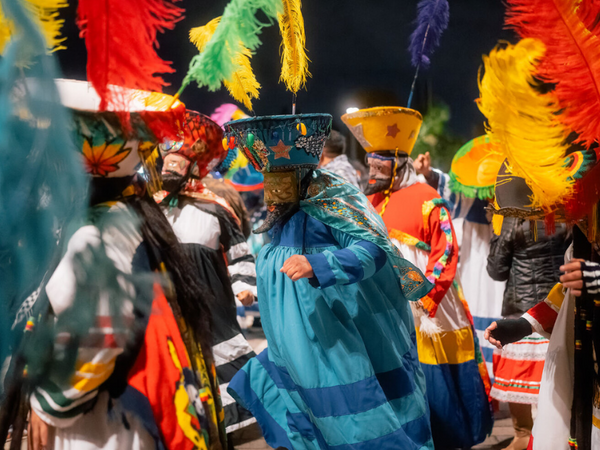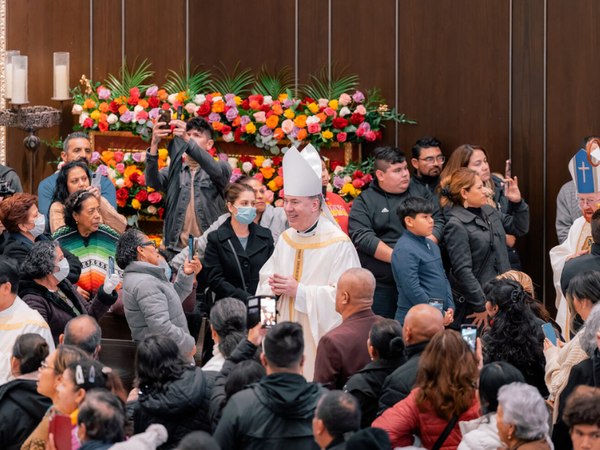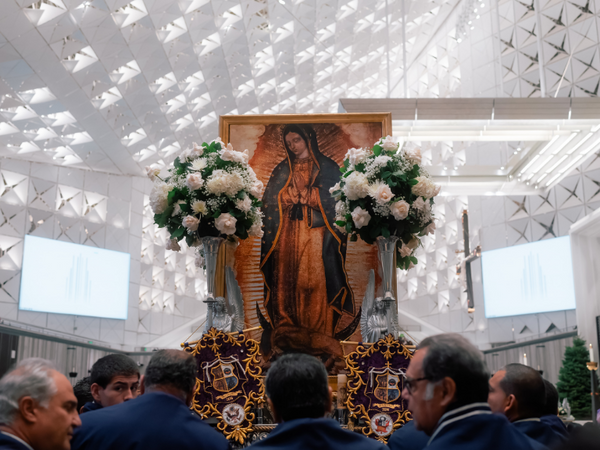The Catholic faithful, including members of the Hispanic clergy of the Roman Catholic Diocese of Orange, gathered on Friday, Dec. 2 at Christ Cathedral to celebrate Our Lady of Guadalupe.
Families from various nationalities and cultures joined the solemn celebration of the Queen of Mexico and Empress of the Americas during the special event, deemed Noche Guadalupana.
“Having Our Lady of Guadalupe as our patron of our Diocese of Orange is a great gift,” said Bishop Timothy Freyer.
“Her apparitions led millions of people in this part of the world to come to faith in Jesus Christ. Now, more than ever, we need her to help the people of our Diocese fall in love with Jesus.”
It was the first bishop of Orange, the Most Reverend William Johnson, who named Our Lady of Guadalupe patroness of the new Diocese, which gives us a glimpse into how important he viewed her to be.
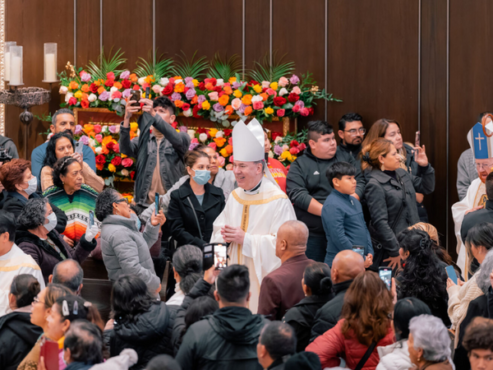
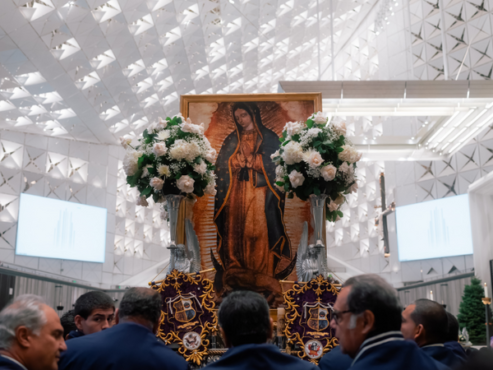
MASS WAS CELEBRATED INSIDE CHRIST CATHEDRAL IN HONOR OF NOCHE GUADALUPANA HELD ON FRIDAY, DEC. 2. PHOTOS BY IAN TRAN/DIOCESE OF ORANGE
Within the Diocese, Hispanic priests led by Father Juan Navarro, parochial vicar of Christ Cathedral, thought of ways to promote devotion to the Blessed Mother and provide the opportunity to pray with all the faithful of its 57 parishes, which is how Guadalupana Night came to fruition.
The festival in honor of the “Morenita del Tepeyac” dates back to the 15th century. The chronicles of that period and the apparitions in December 1531 are narrated in the Nican Mopohua, which means “Here it is told” in Nahuatl.
In this handwritten account, the virgin appeared to Saint Juan Diego, an indigenous convert to Catholicism. The Queen of Heaven expressed to him her desire that a sanctuary be built in her honor on Cerro del Tepeyac, a hill on the outskirts of Mexico City.
Juan Diego was walking along Tepeyac hill when he heard beautiful music, like birds chirping. A radiant cloud appeared within it; an Indian maiden dressed as an Aztec princess. The lady from heaven spoke to him in his language, Nahuatl, and sent him to the bishop of Mexico; a Franciscan named Juan de Zumárraga. The bishop would
have to build a chapel in the place where the woman from heaven appeared.
“God wants to build a temple in the depths of our hearts,” said Fr. Juan Navarro during his homily on Dec. 2. “And God wants us, with faith, to build in a world of darkness and have a space for the love of Our Lady Guadalupe.”
In the account of the Marian apparitions, Bishop Zumárraga asked Juan Diego for the lady to give him a sign. Around that same time, Juan Bernardino, Juan Diego’s uncle, became seriously ill. And he tried to avoid meeting the heavenly woman because he was worried about his uncle and trying to find a priest for him. However, she found Juan Diego and asked him where he was going.
“Listen and understand, my littlest son, let nothing frighten and afflict you or trouble your heart… Am I not here? Who am I, your mother? Are you not under my shadow? Am I not your health? Are you not, by chance, held on my mantle? Do not be upset or worry about anything else; Don’t be afflicted by your uncle’s illness. He won’t die. Be sure he’s healed.”
Juan Diego was consoled, and his heart found calm. His uncle did not die.
The virgin’s signal called for him to climb the Tepeyac hill, cut flowers, gather them, and bring them to her presence. She took them in her hands and put them on Juan Diego’s cloak or tilma.
On Dec. 12, when Juan Diego opened his tilma before the bishop, the roses fell. The image of the Virgin of Guadalupe appeared painted on the mantle. All those present knelt. They cried and apologized to the Blessed Virgin for not believing her word. And now, her image is in the Basilica of Guadalupe in Mexico City.
“The Virgin of Guadalupe is our most holy mother,” said Bishop Kevin Vann. “We are her little children, and in her message, we are called to share her love and compassion with the world. If she were present with us, she would commit us to continue in search of her Son.”
In addition to Mass, followed by the praying of the Holy Rosary, an artistic and cultural festival was held in the central square of Christ Cathedral campus. There were mariachis, folkloric dances and Aztec dances, as well as Mexican food.

